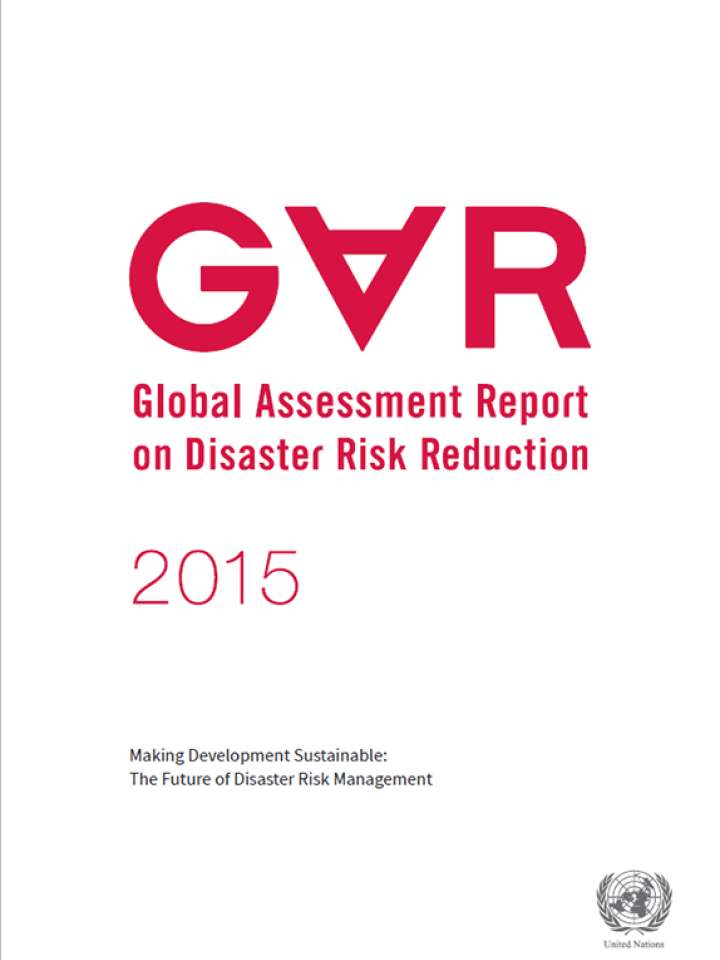Global assessment report on disaster risk reduction 2015
Making development sustainable, the future of disaster risk management:
The fourth edition of the United Nations Global Assessment Report on Disaster Risk Reduction (GAR) is a resource for understanding and analyzing global disaster risk today and in the future. The report explores the large potential losses from disasters currently face by many countries - especially those which can least afford to invest in future resilience and the cost and benefits of disaster risk management (DRM). It emphasizes as well the close link between disaster risk and sustainable development and explores prospective, corrective and compensatory risk management approaches as a way to integrate it in development activities, in order to avoid risk generation and accumulation. The report aims to promote the integration of Disaster Risk Management into development by raising the awareness that managing risks cost less than managing disasters.
The GAR series has compiled and analyzed data and information on disaster risk patterns and trends, government self-assessment of progress, and critical challenges to disaster risk reduction since 2009. GAR09, provided evidence that disaster risk is disproportionately concentrated in lower-income countries with weak governance. Within countries, it showed how underlying drivers such as badly planned and managed urban development, vulnerable rural livelihoods, environmental degradation, poverty and inequality further generate and accumulate disaster risk in low-income communities and households. The findings of GAR09 flowed into GAR11, where the focus shifted to identifying effective public policies to address the disaster risk–poverty nexus. GAR11 analysed the political and economic imperatives and constraints for increased public investment in disaster risk reduction. In GAR13, the focus shifted once again, this time from public policies and investment to the largely unexplored nexus between private investment and disaster risk. It showed how businesses can invest in managing their disaster risks to reduce the costs and interruptions represented by disaster losses and impacts, and how they can enhance performance and reputation by minimizing uncertainty and unpredictability.
GAR15 focuses on how to strengthen the governance of disaster risk and presents the case for a broad reinterpretation of disaster risk reduction. As the HFA draws to a close, GAR15 questions whether the way in which disaster risk reduction has been approached under the HFA is really fit for purpose in a world now threatened by catastrophic increases in disaster risk. In Part I of GAR15, new evidence on contemporary patterns and trends in disaster risk is presented in order to assess the extent to which the expected outcome of the HFA has been achieved. Parts II and III examine whether the way disaster risk reduction has been approached is appropriate to address an increasingly accelerated generation and accumulation of disaster risks. The concluding chapter shows why the focus of disaster risk reduction needs to move from managing disasters to managing risks if it is to contribute to making development sustainable.
Explore further
